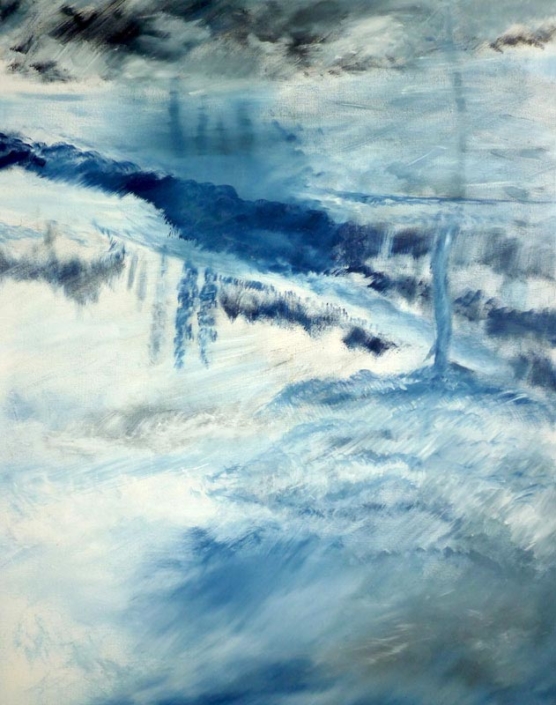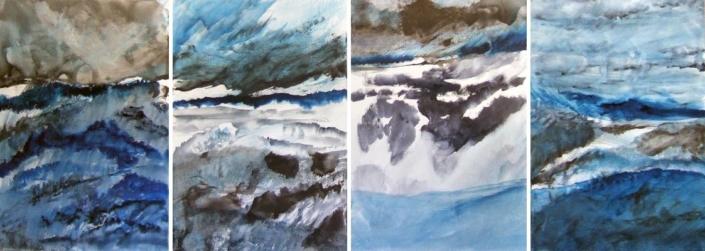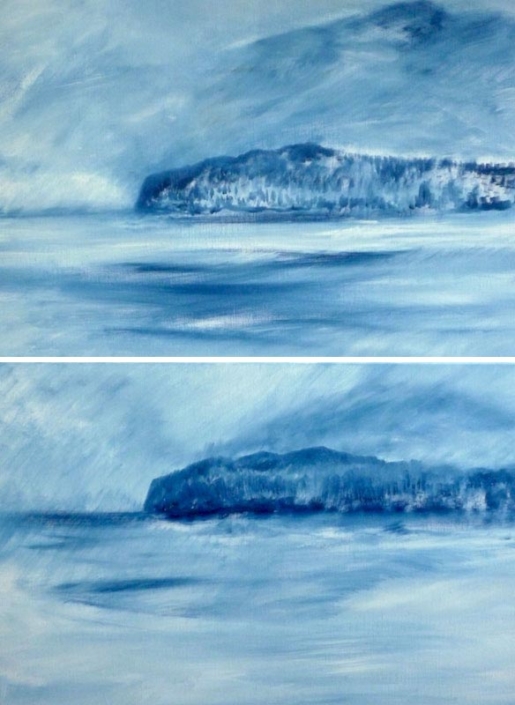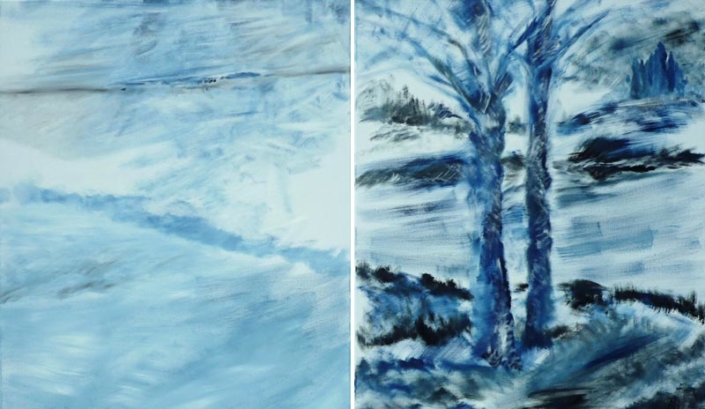Hinterlands
Behind this title we can imagine the landscapes we sometimes dream about, that we can not forget and in which we lose ourselves. Some landscapes are still blurred outlines in our imagination, some have overwhelmed us by their beauty or by their presence, whereas in others, which we have had to forget, we would have liked to linger a while. The Garden of Eden could be given as an example; it is imaginary, cultural and forever lost.
In paintings, these hinterlands are what lead the observer’s eye towards the background and what hold his attention while he is in front of the canvas imagining he is really walking through a landscape. If in Leonardo de Vinci’s work this temptation to explore and lose oneself in a landscape is accentuated by the choice of a “blue” atmosphere and his famous “sfumato”, it is also present in the work of Joachim Patinir whose landscapes are full of blues and bluish shades stretching out towards distant horizons, leading us further away than we usually dare to venture when looking at a painting. When talking about the painters who have, for a long time, influenced my way of seeing, I cannot but mention Claude Lorrain and, of course, Turner. I will never grow tired of looking closely at their landscapes to discern the mystery behind a space which is painted or drawn. Finally, I would like to pay homage to Degas as in his monotypes he provided constantly new landscapes to be discovered at every shift, bend and corner.
So, with painting, landscape both creates itself and the space on the canvas. This alchemy between what I know, what comes out of my memory or my daily walks, and what I am going to discover fascinates me. The unexpected and the instantaneous in the distance, in the background or in the tiny details, are the source of my pictorial expression.








